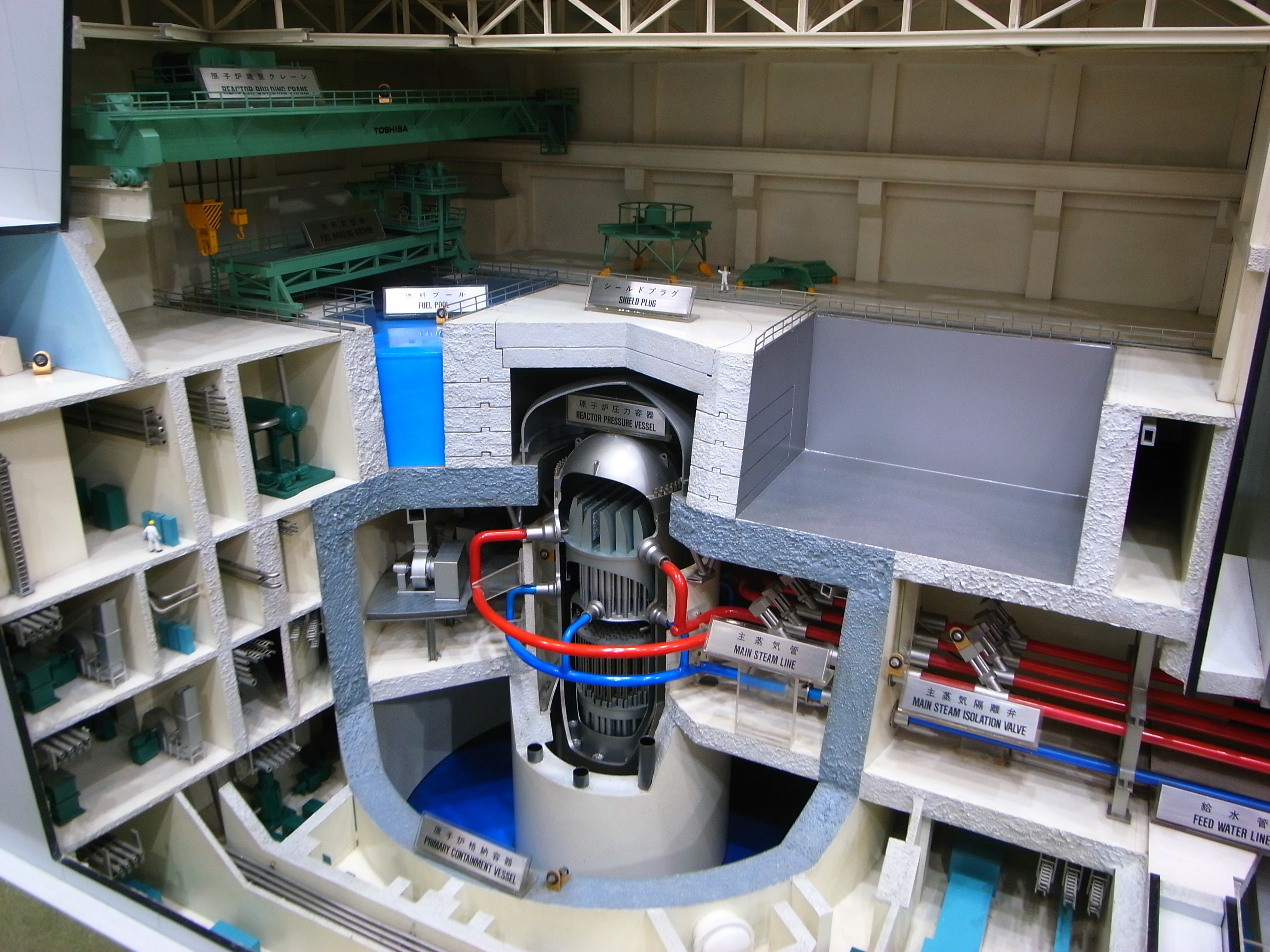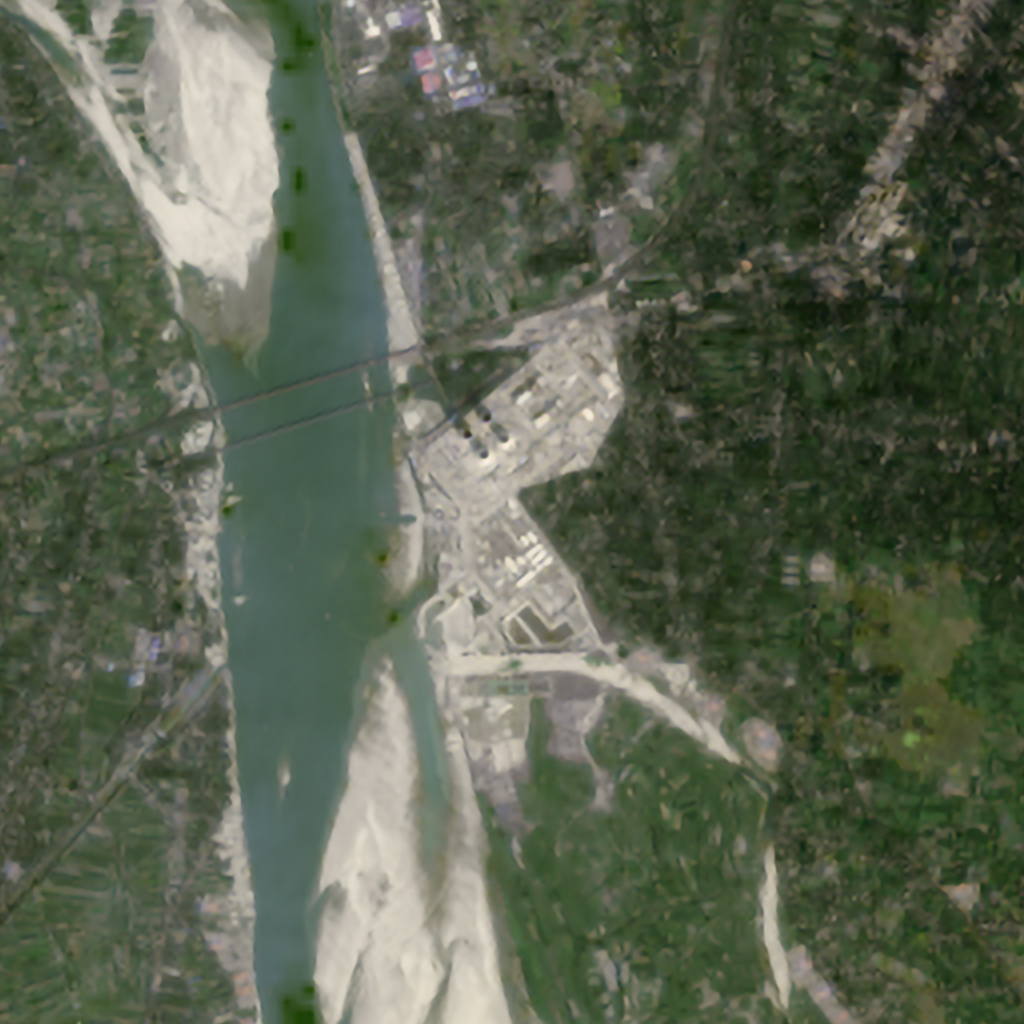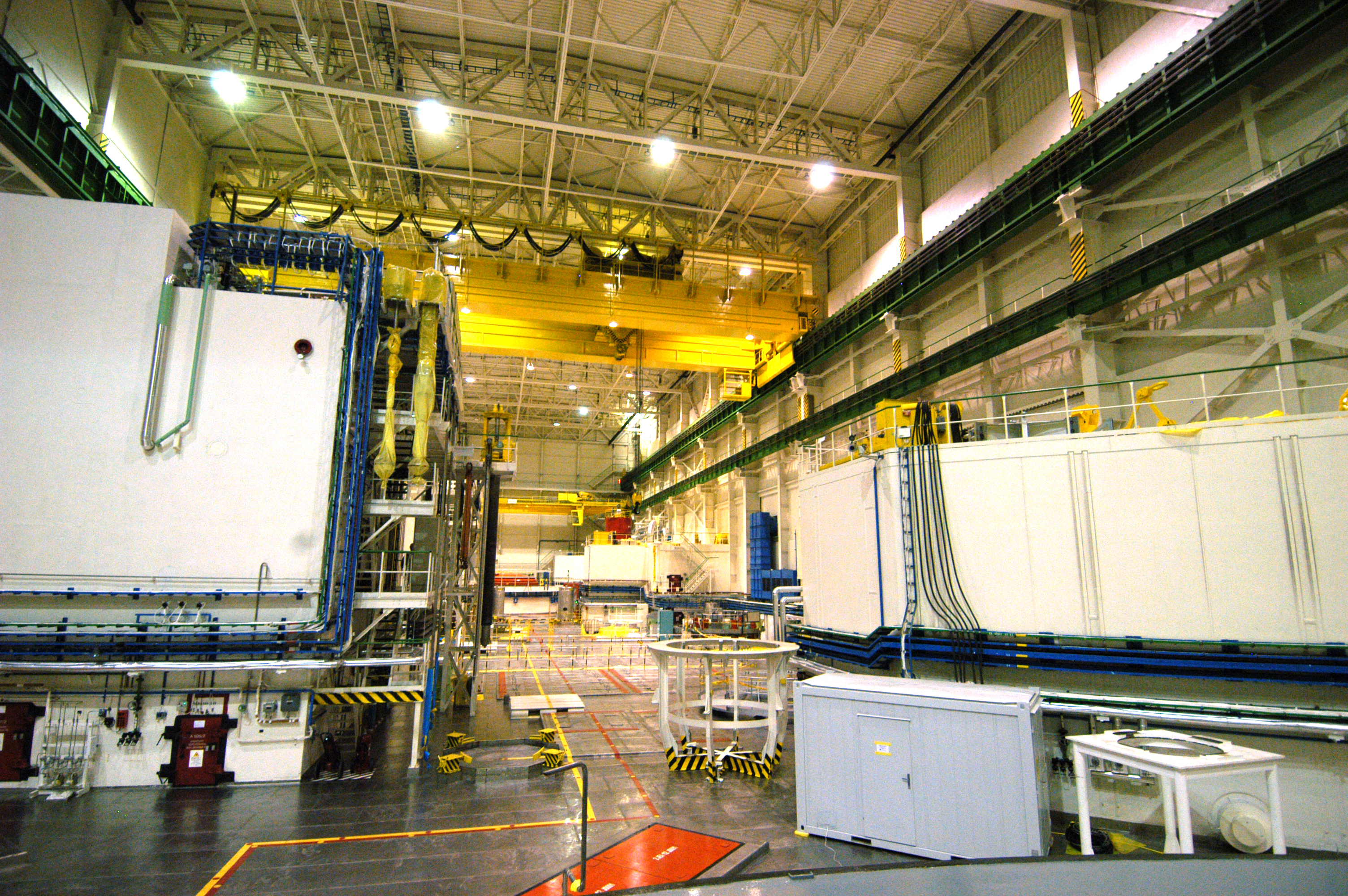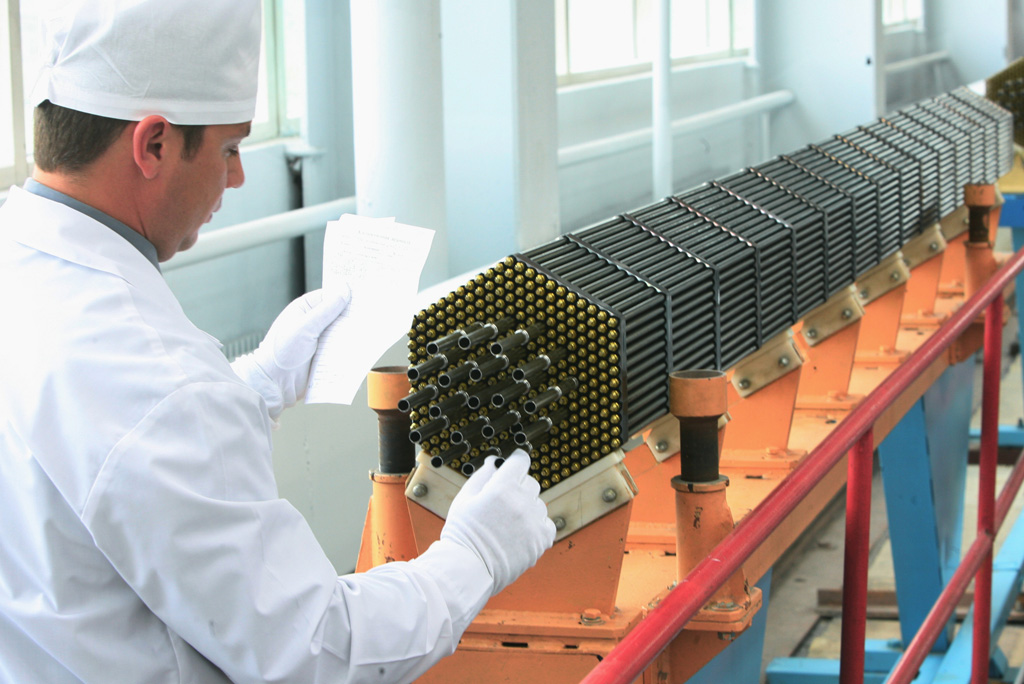|
Generation III Reactor
Generation III reactors, or Gen III reactors, are a class of nuclear reactors designed to succeed Generation II reactors, incorporating evolutionary improvements in design. These include improved fuel technology, higher thermal efficiency, significantly enhanced safety systems (including passive nuclear safety), and standardized designs intended to reduce maintenance and capital costs. They are promoted by the Generation IV International Forum (GIF). The first Generation III reactors to begin operation were Kashiwazaki 6 and 7 advanced boiling water reactors (ABWRs) in 1996 and 1997. From 2012, both have been shut down due to a less permissive political environment in the wake of the Fukushima nuclear accident. Due to the prolonged period of stagnation in the construction of new reactors and the continued (albeit declining) popularity of Generation II/II+ designs in new construction, relatively few third generation reactors have been built. Overview The older Gen II reactors ... [...More Info...] [...Related Items...] OR: [Wikipedia] [Google] [Baidu] |
ABWR Toshiba 1
The advanced boiling water reactor (ABWR) is a Generation III boiling water reactor. The ABWR is currently offered by GE Hitachi Nuclear Energy (GEH) and Toshiba. The ABWR generates electrical power by using steam to power a turbine connected to a generator; the steam is boiled from water using heat generated by fission reactions within nuclear fuel. Kashiwazaki-Kariwa unit 6 is considered the first Generation III reactor in the world. Boiling water reactors (BWRs) are the second most common form of light water reactor with a direct cycle design that uses fewer large steam supply components than the pressurized water reactor (PWR), which employs an indirect cycle. The ABWR is the present state of the art in boiling water reactors, and is the first Generation III reactor design to be fully built, with several reactors complete and operating. The first reactors were built on time and under budget in Japan, with others under construction there and in Taiwan. ABWRs were on order ... [...More Info...] [...Related Items...] OR: [Wikipedia] [Google] [Baidu] |
Barry Brook (scientist)
Barry William Brook (born 28 February 1974 in Melbourne, Australia) is an Australian scientist. He is an ARC ''Australian Laureate Professor'' and Chair of Environmental Sustainability at the University of Tasmania in the Faculty of Science, Engineering & Technology. He was formerly an ARC ''Future Fellow'' in the School of Earth and Environmental Sciences at the University of Adelaide, Australia, where he held the '' Sir Hubert Wilkins Chair of Climate Change'' from 2007 to 2014. He was also Director of Climate Science at the ''Environment Institute''. Early life and education Brook attended high school in Coonabarabran, before studying at Macquarie University, Sydney, where he earned a BSc(First Class Honours) in biology and computer science, and a PhD in population viability analysis and conservation biology. Career Brook is an ecologist who has published three books anover 300 peer-reviewed scientific papers is an ISI highly cited researcher, and regularly writes opinion ... [...More Info...] [...Related Items...] OR: [Wikipedia] [Google] [Baidu] |
Usina Nuclear Em Novovoronezh, Rússia 01
Usina is a region of Rio de Janeiro Rio de Janeiro, or simply Rio, is the capital of the Rio de Janeiro (state), state of Rio de Janeiro. It is the List of cities in Brazil by population, second-most-populous city in Brazil (after São Paulo) and the Largest cities in the America ..., but not officially recognized as a neighborhood. Geography of Rio de Janeiro (city) {{RiodeJaneiro-geo-stub ... [...More Info...] [...Related Items...] OR: [Wikipedia] [Google] [Baidu] |
VVER
The water-water energetic reactor (WWER), or VVER (from ) is a series of pressurized water reactor designs originally developed in the Soviet Union, and now Russia, by OKB Gidropress. The idea of such a reactor was proposed at the Kurchatov Institute by Savely Moiseevich Feinberg. VVER were originally developed before the 1970s, and have been continually updated. They were one of the initial reactors developed by the USSR, the other being the infamous RBMK. As a result, the name VVER is associated with a wide variety of reactor designs spanning from generation I reactors to modern generation III+ reactor designs. Power output ranges from 70 to 1300 MWe, with designs of up to 1700 MWe in development. The first prototype VVER-210 was built at the Novovoronezh Nuclear Power Plant. VVER power stations have been installed in Russia, Ukraine, Belarus, Armenia, China, the Czech Republic, Finland, Hungary, Slovakia, Bulgaria, India, and Iran. Countries that are planning to introduce VVER r ... [...More Info...] [...Related Items...] OR: [Wikipedia] [Google] [Baidu] |
Novovoronezh Nuclear Power Plant II
Novovoronezh Nuclear Power Plant II (NvNPPII; []) is a Russian nuclear power plant with two 1200 MW pressurized water reactors (VVER) located in Voronezh Oblast. The power plant is built on the same site as the present Novovoronezh Nuclear Power Plant. Unit 1 started commercial operation in 2017, and was the Generation III reactor#First reactors, first Generation III+ nuclear reactor in the world. Unit 2 was connected to the grid in 2019. History In 2006, the Russian government legislated a nuclear expansion plan for 2007–2015. The plan aimed to put two new nuclear reactors into operation each year from 2012. This decision provided impetus for the construction of Novovoronezh II, which had been originally been proposed in 1999. On 20 June 2007 preparations began at the construction site, and the construction starting ceremony was held on 12 July 2009. In January 2017 the plant took delivery of a Safety instrumented system, safety instrumentation and control system from Ar ... [...More Info...] [...Related Items...] OR: [Wikipedia] [Google] [Baidu] |
Rooppur Nuclear Power Plant
The Rooppur Nuclear Power Plant () is a 2.4 GWe nuclear power plant currently under construction in Bangladesh. It consists of two 1200 MWe VVER-1200 reactors. The nuclear power plant is being constructed at Rooppur in Ishwardi Upazila on the bank of the river Padma, about 160 km northwest of Dhaka. It will be the country's first nuclear power plant, and the first of the two units is expected to become operational in December 2025. History Planning The plan to establish a nuclear power plant in the then East Pakistan was made in 1961. In 1963, the Rooppur village of the Pabna district was selected for the proposed plant and 260 acres of land was acquired. The plan was to establish a 200MW nuclear power plant on the selected site. The plan to construct a 200 MW power plant was completed in 1969 with the assistance of Belgium. However, in 1969-1971, the project was scrapped by the then Pakistan government. After Bangladesh gained independence, the government of Bangladesh ... [...More Info...] [...Related Items...] OR: [Wikipedia] [Google] [Baidu] |
VVER-1200
The water-water energetic reactor (WWER), or VVER (from ) is a series of pressurized water reactor designs originally developed in the Soviet Union, and now Russia, by OKB Gidropress. The idea of such a reactor was proposed at the Kurchatov Institute by Savely Moiseevich Feinberg. VVER were originally developed before the 1970s, and have been continually updated. They were one of the initial reactors developed by the USSR, the other being the infamous RBMK. As a result, the name VVER is associated with a wide variety of reactor designs spanning from generation I reactors to modern generation III+ reactor designs. Power output ranges from 70 to 1300 MWe, with designs of up to 1700 MWe in development. The first prototype VVER-210 was built at the Novovoronezh Nuclear Power Plant. VVER power stations have been installed in Russia, Ukraine, Belarus, Armenia, China, the Czech Republic, Finland, Hungary, Slovakia, Bulgaria, India, and Iran. Countries that are planning to introduce ... [...More Info...] [...Related Items...] OR: [Wikipedia] [Google] [Baidu] |
Rosatom
State Atomic Energy Corporation Rosatom (commonly referred to as Rosatom rus, Росатом, p=rosˈatəm}), also known as Rosatom State Nuclear Energy Corporation, (), or Rosatom State Corporation, is a Russian State corporation (Russia), state corporation headquartered in Moscow that specializes in Nuclear power in Russia, nuclear energy, nuclear non-energy goods and high-tech products. It was established in 2007 and comprises more than 350 enterprises, including scientific research organizations, a Nuclear weapon, nuclear weapons complex, and the world's only Nuclear-powered icebreaker, nuclear icebreaker fleet. The organization is the largest electricity generating company in Russia, producing 217.4 TWh of electricity, 20.28% of the country's total electricity production. The corporation ranks first in overseas nuclear power plant construction, responsible for 90% of global nuclear technology exports: 22 nuclear power plant units, at different stages of development, in ... [...More Info...] [...Related Items...] OR: [Wikipedia] [Google] [Baidu] |
Containment Building
A containment building is a reinforced steel, concrete or lead structure enclosing a nuclear reactor. It is designed, in any emergency, to contain the escape of radioactive steam or gas to a maximum pressure in the range of . The containment is the fourth and final barrier to radioactive release (part of a nuclear reactor's defence in depth strategy), the first being the fuel ceramic itself, the second being the metal fuel cladding tubes, the third being the reactor vessel and coolant system. Each nuclear plant in the United States is designed to withstand certain conditions which are spelled out as "Design Basis Accidents" in the Final Safety Analysis Report (FSAR). The FSAR is available for public viewing, usually at a public library near the nuclear plant. The containment building itself is typically an airtight steel structure enclosing the reactor, normally sealed off from the outside atmosphere. The steel is either free-standing or attached to the concrete missile shiel ... [...More Info...] [...Related Items...] OR: [Wikipedia] [Google] [Baidu] |
Corium (nuclear Reactor)
The Three Mile Island Nuclear Generating Station, Three Mile Island reactor 2 after the partial meltdown. Corium, also called fuel-containing material (FCM) or lava-like fuel-containing material (LFCM), is a material that is created in a nuclear reactor core during a nuclear meltdown accident. Resembling lava in consistency, it consists of a mixture of nuclear fuel, fission products, control rods, structural materials from the affected parts of the reactor, products of their chemical reaction with air, water, steam, and in the event that the reactor vessel is breached, molten concrete from the floor of the reactor room. Composition and formation The heat causing the melting of a reactor may originate from the nuclear chain reaction, but more commonly decay heat of the fission products contained in the fuel rods is the primary heat source. The heat production from radioactive decay drops quickly, as the short half-life isotopes provide most of the heat and radioactive decay, ... [...More Info...] [...Related Items...] OR: [Wikipedia] [Google] [Baidu] |
Core Catcher
A core catcher is a device provided to catch the molten core material ( corium) of a nuclear reactor in case of a nuclear meltdown and prevent it from escaping the containment building. A core catcher is made from a special thermally resistant concrete ceramic to prevent nuclear core material from melting through the core catcher; it also has a cooling mechanism to cool down the core material. The core catcher of the European Pressurized Reactor (EPR) has 170 m2 expansion area and a mass of 500 t. Examples of reactor types with core catchers, besides the EPR, are: * SNR-300 (fast breeder)Areva Brochure: EPR - reference number:G-61-V1-07-GER * AES-91 / VVER-1000/428 * VVER-1200(PWR) * SWR1000 (BWR) * ESBWR ( BWR) * ABWR (BWR) * APWR ( PWR) * Atmea I (PWR) * ACPR-1000 (PWR) * EU-APR1400 (PWR) * IPWR-900 The AES-91, a project of Atomstroyexport based on the VVER-1000 design, was envisaged to be the first type of nuclear plant to have a core catcher directly und ... [...More Info...] [...Related Items...] OR: [Wikipedia] [Google] [Baidu] |
Fukushima Daiichi Nuclear Disaster
The Fukushima nuclear accident was a major nuclear accident at the Fukushima Daiichi Nuclear Power Plant in Ōkuma, Fukushima, Japan, which began on 11 March 2011. The cause of the accident was the 2011 Tōhoku earthquake and tsunami, which resulted in electrical grid failure and damaged nearly all of the power plant's Emergency power system, backup energy sources. The subsequent inability to sufficiently cool reactors after shutdown compromised Primary containment, containment and resulted in the release of radioactive contamination, radioactive contaminants into the surrounding environment. The accident was rated seven (the maximum severity) on the International Nuclear Event Scale by Nuclear and Industrial Safety Agency, following a report by the JNES (Japan Nuclear Energy Safety Organization). It is regarded as the worst nuclear incident since the Chernobyl disaster in 1986, which was also rated a seven on the International Nuclear Event Scale. According to the United Nati ... [...More Info...] [...Related Items...] OR: [Wikipedia] [Google] [Baidu] |







